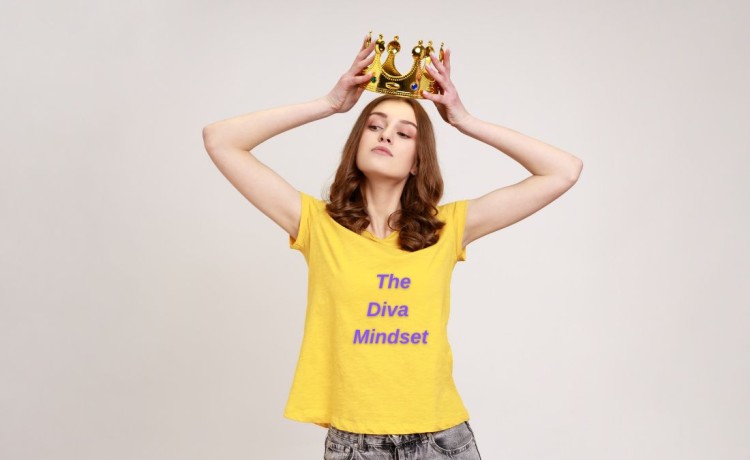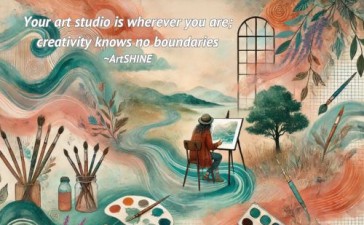In the vibrant world of art, design, and creative professions, talent alone is rarely enough to guarantee success. While skill and vision are undoubtedly crucial, the attitude and approach an artist brings to their career can be equally important. One particularly destructive mindset that can hinder a creative professional’s progress is what’s commonly known as the “diva mindset.” This article explores the dangers of this attitude, its impact on various creative fields, and how avoiding it can lead to greater success, particularly in the realm of art licensing.
The Diva Mindset Defined
The diva mindset is characterized by an inflated sense of self-importance, unrealistic expectations, and a reluctance to engage in work or opportunities deemed “beneath” one’s perceived status. In the context of creative professions, this often manifests as artists or designers who refuse to take on smaller projects, collaborate with lesser-known entities, or accept licensing deals that don’t meet their lofty standards. While confidence and self-respect are valuable traits, the diva mindset takes these to an extreme, often to the detriment of the artist’s career and personal growth.
Impact on Artists and Designers
For artists and designers, the diva mindset can be particularly damaging. The creative industry is known for its competitiveness and the importance of networking and relationship-building. When an artist adopts a diva attitude, they may:
- Miss out on valuable opportunities for exposure and experience
- Alienate potential collaborators and clients
- Develop a reputation for being difficult to work with
- Limit their growth by avoiding challenges or new experiences
- Struggle to adapt to changing market conditions or trends
Examples of the Diva Mindset in Action
Several well-known artists have grappled with the diva mindset at various points in their careers. One notable example is the late pop artist Andy Warhol. Early in his career, Warhol was known for his willingness to take on commercial work and collaborations. However, as his fame grew, he became increasingly selective about his projects and collaborators, sometimes to his detriment. While Warhol’s legacy remains strong, some argue that his later works lacked the innovation and impact of his earlier pieces, possibly due to his growing isolation and selectivity.
Another example is the British street artist Banksy. While Banksy’s anonymity and anti-establishment stance have contributed to his mystique, they have also limited his ability to engage in certain commercial ventures. This self-imposed restriction, while part of his brand, could be seen as a form of the diva mindset, potentially limiting his reach and impact in the broader art world.
The Licensing Landscape
In the world of art licensing, the diva mindset can be particularly problematic. Licensing offers artists the opportunity to expand their reach, increase their income, and build their brand through partnerships with various companies and products. However, some artists fall into the trap of becoming “licensing divas,” rejecting smaller deals because they don’t see them as worthwhile. These artists often wait for a big break or a substantial offer, believing that anything less is beneath them.
This approach can be detrimental for several reasons:
- Missed Opportunities: Rejecting small deals can mean missing out on opportunities that could lead to larger, more lucrative ones. Each small licensing agreement can build momentum, add to your portfolio, and increase your credibility.
- Limited Exposure: Smaller licensing deals often provide exposure to new audiences and markets, which can be invaluable for an artist’s growth and recognition.
- Lack of Diverse Experience: By only pursuing large deals, artists miss out on the chance to work with a variety of clients and industries, limiting their versatility and adaptability.
- Slow Career Growth: Building a successful licensing career often requires starting small and gradually working up to bigger deals. The diva mindset can significantly slow this progression.
Success Stories: Artists Who Avoided the Diva Trap
Conversely, many successful artists have achieved greatness by avoiding the diva mindset and embracing a more open, collaborative approach. Here are a few examples:
- Romero Britto: The Brazilian artist Romero Britto is a notable example of someone who avoided the diva mindset. Britto started with small commissions and gradually built his reputation. He accepted various opportunities, regardless of their size, and used them to enhance his visibility and credibility. Today, Britto’s colorful pop art is internationally recognized, and he enjoys significant commercial success through extensive licensing deals.
- Keith Haring: Despite achieving fame in the 1980s New York art scene, Keith Haring remained committed to making his art accessible to all. He continued to create public murals, collaborate with diverse partners, and even opened a retail store to sell affordable merchandise featuring his designs. This approach helped cement his legacy and ensure his art reached a wide audience.
- Yayoi Kusama: The Japanese artist Yayoi Kusama has collaborated with brands ranging from high-end fashion houses to affordable retail chains. By being open to diverse opportunities, Kusama has expanded her influence and brought her unique vision to a global audience.
Strategies for Avoiding the Diva Mindset
For artists, designers, and creative professionals looking to build successful careers, particularly in licensing, here are some strategies to avoid falling into the diva mindset:
- Stay Humble: Remember that every opportunity, no matter how small, is a chance to learn, grow, and potentially open doors to bigger things.
- Be Open to Collaboration: Embrace the chance to work with others, even if they’re not as well-known or established as you might like. These collaborations can lead to new ideas and opportunities.
- Value Learning Experiences: Approach each project as a learning opportunity. Even if the financial reward isn’t significant, the experience and knowledge gained can be invaluable.
- Build Relationships: The creative industry thrives on relationships. Be known as someone who is easy to work with and open to new ideas.
- Diversify Your Portfolio: Don’t limit yourself to one type of work or client. A diverse portfolio showcases your versatility and can attract a wider range of opportunities.
- Start Small, Think Big: Be willing to start with smaller licensing deals or projects, but always keep your long-term goals in mind. Use each opportunity as a stepping stone towards your larger ambitions.
- Stay Grounded: Surround yourself with people who will give you honest feedback and keep you grounded. It’s easy to lose perspective when you’re in the creative bubble.
- Embrace Continuous Learning: The creative field is always evolving. Stay curious and be willing to learn new techniques, technologies, and trends.
Conclusion
The diva mindset, while tempting for some artists who have tasted success or recognition, is ultimately a self-defeating attitude. In the competitive and ever-changing landscape of creative professions, particularly in the field of art licensing, humility, openness, and a willingness to seize opportunities of all sizes are far more likely to lead to long-term success and fulfillment.
By avoiding the pitfalls of the diva mindset and instead cultivating an attitude of continuous growth and collaboration, artists and designers can build robust, diverse careers that stand the test of time. Remember, every great artist started somewhere, and it’s often the small steps and seemingly insignificant opportunities that pave the way for greater achievements. In the end, it’s not just about the art you create, but the relationships you build and the impact you make along the way.
- Find out more
- Launch Pad + Accelerator Expressions of Interest
- Selling and Licensing Your Art & Designs Around the World with ArtSHINE.
- Looking for exciting new Art and Designs to license.
We’re here to help you to take action, just like we’ve helped thousands of other entrepreneurs, business owners, and creative professionals all around the globe.
Now is the time to let your passion SHINE.
Now is the time to Make Tomorrow Today!
To your success, Vinh Van Lam and Stuart Horrex Cofounders ArtSHINE.com





